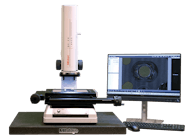Improved sustainability is just one advantage of going lean — and according to the U.S. Environmental Protection Agency and lean practitioners, it isn’t even a direct result.
For an example of some of the primary benefits, Vera Adam-Groetschel, who leads environmental, social and governance (ESG) initiatives at the Kaizen Institute consulting firm, cited one lean company that sees double-digit percentages in increases in profit year over year.
Of another company, she said, “By implementing lean, they improved their EBITDA [earnings before interest, taxes, depreciation and amortization] from minus 1.3 percent to almost 10 percent within five years.”
If you’re considering exploring lean, here are some other benefits advocates such as Adam promote:
- Waste reduction
- Fewer accidents
- More consistency and reliability in production
- Better, stronger teams and improved employee satisfaction
- Better odds at attracting workers, especially younger workers, who are interested in contributing to a sustainable, innovative workplace
- Reduced work time, materials or capital costs, due to the simplification of process steps and elimination of redundancies
- Reduced parts, material types and detrimental environmental impacts, due to scrapping poor or overly complex product design, which also can hinder disassembly and recycling efforts
- More time and resources to invest in innovations and workers, and to allow workers to focus on tasks that require their expertise
- Reduced need to build new facilities
- Creation of more space for productive activities, or the reduction of the need for space, reducing utilities and the movement of personnel and goods, thanks to lean projects like organizing and disposing of unused equipment and supplies
- Less material, space and energy usage, due to using machines sized specifically for the task
- Fewer opportunities for damage to goods, parts or raw materials, and less need for degreasing of metal parts held in storage, due to the reduction of goods kept on site but not in use
- Reduced consumption of equipment, parts and materials because they’re easier to find and better labeled
- Less lighting consumption, thanks to lean improvements such as better lighting, more-rigorous cleaning or brighter paint, which also can improve employees’ chances of noticing spills, leaks, defects and contaminants
Contact:
Kaizen Institute North America, Scottsdale Ariz., 888-464-3622, https://kaizen.com/us
U.S. Environmental Protection Agency, www.epa.gov/sustainability/lean-manufacturing-and-environment
ABB appoints chief sales officer for B&R
KraussMaffei now building extruders in U.S.






